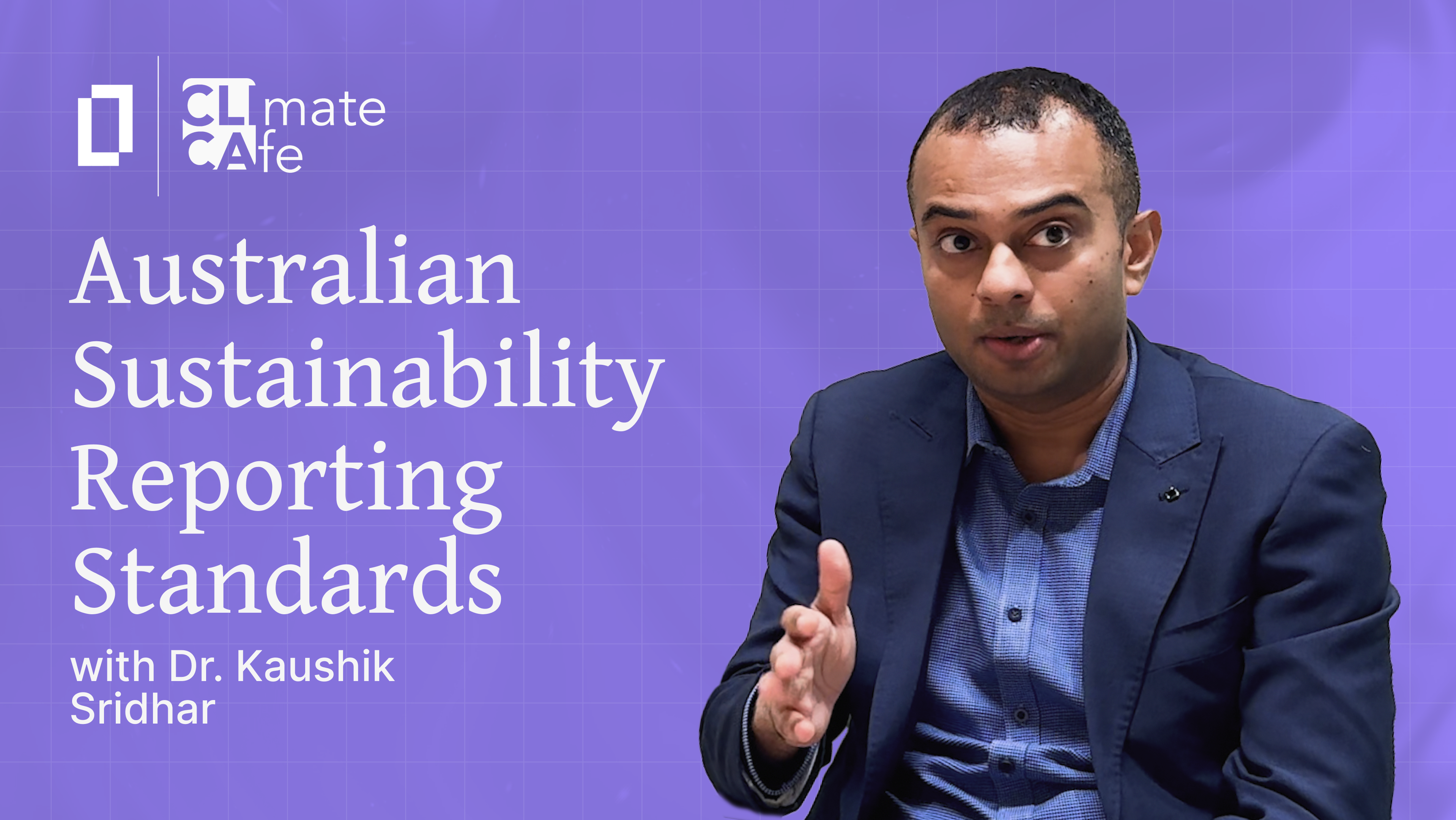Summary
- Australia’s climate disclosure rules are accelerating: With the Albanese government re-elected, businesses can expect climate regulations like AASB S1 and S2 to be stringently and more proactively enforced than other jurisdictions, narrowing preparation timelines.
- AASB S2 elevates climate to financial risk: S2 shifts sustainability from voluntary action to enforceable financial disclosure, pushing companies to align climate risks with strategic and financial planning.
- Compliance is just the beginning, but strategy has to be the goal: Sustainability leaders must go beyond compliance by embedding climate data into governance, enterprise risk management, and strategic business planning.
- Now is the time to act: With first disclosures beginning from Jan 2025, companies—especially SMEs—must start climate materiality assessments, gap analyses, and board training today.
With the Albanese government securing re-election and reaffirming its sustainability agenda, Australia is entering a new era of climate transparency.
Dr. Kaushik Sridhar (FGIA, GAICD) is a seasoned sustainability leader with 20+ years' experience developing ESG strategies across sectors like mining, healthcare, and consulting. Formerly of KPMG, EY, and Evolution Mining, Kaushik now leads Orka Advisory and holds academic and advisory roles at institutions including the University of Melbourne and EnergyLab. A TEDx speaker and global educator, he specialises in sustainability leadership and regulatory transformation.
In a recent discussion between Lia Nicholson, Director of Sustainability at Terrascope, and Dr. Kaushik Sridhar, Founder of Orka Advisory, the pair explored what the 2025 climate disclosure landscape means for Australian businesses, and what they must do now to stay ahead.
1. From Policy Uncertainty to Regulatory Clarity
In the lead-up to the federal election, many companies paused sustainability investments, awaiting clearer policy signals. With political continuity now confirmed, businesses face no ambiguity—mandatory disclosures under AASB S2 are moving ahead.
As Dr. Sridhar explained, the regulatory direction is clear: “Companies delayed action, but the return of the Albanese government reaffirms climate reporting as a national priority. The preparation window is now narrowing fast.”
Alongside S2, complementary initiatives such as updates to the safeguard mechanism and new guidance on greenwashing reinforce that climate disclosure is no longer optional. The implications are broad and binding—especially for companies that haven’t traditionally focused on sustainability.
2. AASB S2: Financial Disclosure, Not Just ESG
The Australian Accounting Standards Board (AASB) S2 standard isn’t just another ESG initiative—it’s a financial disclosure framework. Modeled on the ISSB’s global baseline, S2 mandates that companies disclose climate-related risks and opportunities in ways material to investors, across governance, strategy, risk management, and metrics.
As Dr. Sridhar noted,
“S2 elevates climate from an environmental concern to a board-level financial risk. CFOs now share the table with CSOs to translate climate exposure into strategic decisions.”
The implication behind this? Sustainability teams must prepare to work more closely with finance, audit, and enterprise risk, developing robust data practices that can pass financial scrutiny and regulatory assurance.
3. Turning Reporting into Strategy
Despite its compliance origins, AASB S2 is a strategic unlock when approached correctly. Climate data can reveal inefficiencies, enable decarbonisation planning, and support capital access. As Dr. Sridhar shared, understanding energy data was what revealed cost savings, shaped M&A strategy, and unlocked sustainability-linked finance for the organisations he advised.
He recommends every business take four initial steps, when it came to reacting to AASB S2:
- Conduct a climate materiality assessment focused on physical and transition risks
- Map disclosures against the four pillars of AASB S2
- Perform a gap analysis across governance, data quality, and systems
- Create a phased roadmap toward full compliance and strategic integration
Scenario analysis, board literacy, and audit-readiness must also be addressed.
“The CFO should be your starting point, they control the purse strings and are now on the hook for disclosure accuracy.”
4. Scope 3 and SMEs: The Next Big Challenge
While AASB S2 mandates reporting on Scope 1 and 2 initially, Scope 3 looms large. “Scope 3 emissions represent 70% of global emissions and are often under-reported,” said Sridhar. Agriculture, industrials, and transport-heavy sectors are particularly exposed.
Australia’s backbone, its small to mid-sized enterprises, will also need support. “SMEs make up over 80% of the market, but lack the resources of large corporates. Helping them is both the greatest challenge and the biggest opportunity,” Sridhar said.
He stressed the need for tools like Terrascope to help automate data collection, establish baselines, and simplify compliance journeys.
“This isn’t just a compliance task. Start now. Run a climate materiality assessment, map your data, and build a roadmap. It’s your credibility on the line.”
- Dr. Kaushik Sridhar, Founder & CEO, Orka Advisory

.png)



